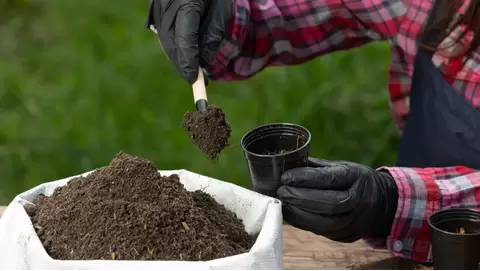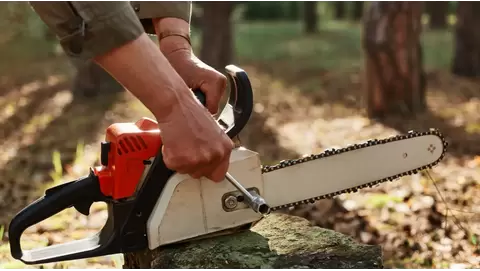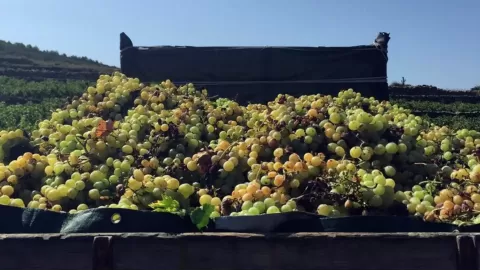
How to choose the best fungicide for your lawn
Home garden enthusiasts can hold on to gardens and beauty, but besides, taking care of a garden is, well, hard. The hardest job is controlling fungus in yards, while gardens are plagued by many fungal diseases.
These infections typically occur in the leaves, stems, and roots of the plant. The result of this is the leaves draining of colour, wilting, the plant not growing well, and potentially dying. Diseases tend to be more aggressive and do more damage when they aren't treated in a prompt manner.
This is where fungicide for lawns steps in and aids in saving your plants from being infested by fungal growth. The purpose of these substances is to kill or inhibit fungi.
Growcycle is a reputable company that provides high quality fungicides to gardeners. Customers use its products to protect their gardens from fungal diseases. The company’s professionals know just how important healthy gardens are. They provide safe and effective products that are also good for the planet. Their fungicides are structured for all your garden needs, providing several types of fungicides to prevent and treat disease, offering the perfect solution so that gardeners can minimise disease and take control.
Common Fungal Lawn Diseases
Before choosing a fungicide, we should first understand the diseases commonly seen on the lawn. Identifying the diseases will help in selecting a precisely matched fungicide for lawn treatment. Below are some of the typical fungal infections of plants:
- Brown Patch
Brown patches are a common disease of lawns, particularly in humid environments. They make enormous round brown spots in the grass. This condition thrives in warm and wet places. Left untreated, it can quickly spread.
- Dollar Spot
It’s seen on the lawn as small, silver-dollar-sized dots. These patches may merge to form larger ones, which can make the lawn look ugly. Dollar spot typically attacks lawns during the growing season and is capable of persisting if left unchecked.
- Powdery Mildew
Powdery mildew is visually recognized by a white or gray powdery coating on the leaf surface of the grass. This fungus can hinder the growth of the grass as well, making it hard for the grass to photosynthesize effectively.
Types of Fungicides
Here are the primary fungicides that gardeners can use to protect their garden:
1. Contact Fungicides
Contact fungicides adhere to the surface of the grass, where they kill fungus on contact. They offer instant defense. But these seemingly wouldn’t work for me for a long time and might work better if they have to be applied several times, such as after rain or watering.
2. Systemic Fungicides
Systemics are taken up by the grass and absorbed by the plant. They resist fungal diseases for a long time. They travel along the plant's veins. This makes them excellent at both treating current infections and preventing new ones.
3. Preventative Fungicides
Protective fungicides are used before disease symptoms are visible. They create a protective wall on the grass and prevent fungal spores from germinating.
4. Curative Fungicides
Systemic fungicides treat active infections of the fungus. They help to eliminate the fungi that are already there, and prevent the disease from spreading.
How to Choose the Best Fungicide for Lawn?
Selecting the best fungicide for grass can be a daunting task because there are so many different products out there. Here’s what to think about:
Step 1: Determine the Fungal Disease
Growers will want to determine which type of fungal disease is destroying their lawn before buying. Various fungicides are useful for treating different species of fungal diseases. For instance, a product effective against brown patches may not work as well for dollar spots. Watch the symptoms closely. If necessary, you can consult with a lawn care pro for an accurate diagnosis.
Step 2: Research Fungicide Options
Compare different commercial fungicide products. Try to find products that are aimed directly at the same fungus you’ve already identified in your lawn. Reviews and recommendations flourish on gardening forums. This bay can give great information on how well certain fungicides work!
Step 3: Check the Active Ingredients
The efficacy of a fungicide mostly depends on the active ingredients in it. Typical chemical ingredients are chlorothalonil, propiconazole, and azoxystrobin. Every ingredient has the ability to kill that particular fungus. So, make sure to read the label well to make sure that it is the product that is right for your lawn.
Step 4: Consider Environmental Impact
Gardeners value fungicides in controlling diseases, but they need to understand their effects at the ecological level. Gardeners should avoid using harmful substances in the vicinity of kids, pets, and other wildlife. Organic fungicides have less effect on the environment and are less likely to destroy beneficial species present in the lawn's soil.
Step 5: Weather Conditions
Fungicide efficiency can be affected by weather. Some are less effective when it rains or it’s very hot. Consult the product label for any cold-weather application instructions.
Guidelines on Using Fungicides in Lawn
Effective fungicide use is about more than just picking the right product. Just follow these tips to achieve the best results:
Properly Read the Instructions
Check the label that comes with the fungicide product and always use it as directed by the manufacturer. This includes application rates, timing, and safety recommendations. Too much is a problem for the lawn and the environment, and too little is not going to do anything in terms of control of the disease.
Apply at the Right Time
Fungicide application timing is key. To avoid that, fungicides should be sprayed before symptoms emerge, especially in humid, warm weather. For curative treatments, use it as soon as the user sees signs of fungal infection.
Maintain Proper Lawn Care Practices
Fungicides are most effective when used in combination with good lawn care practices. Keep the grass watered, mowed, and aerated to minimize fungus growth.
Benefits of Using Fungicides in the Lawn
Applying fungicides in the garden can have positive effects on plants and garden health. Here’s a summary of just a few of the key benefits:
Enhanced Aesthetic Appeal
A lawn that is healthy and free of disease is pleasing to the eye. Fungicides also keep the grass green and uniform, which makes the landscape more appealing.
Improved Grass Health
Fungicides shield the turf from fungal diseases, which allows the grass to grow in a healthier and vigorous manner. A healthier grass can better tolerate ‘shocks from outside and recover from less than ideal situations.
Safe and easy to use
But fungicides from Growcycle and like-minded companies are safe. Used as directed, they are not harmful to people or plants. They are also easy to apply in the garden as they come in different forms like spray, granules, and dust.
FAQs
When should gardeners apply fungicide?
It should be used when it is hot and damp; this is when fungus is most likely to develop on plants. The prophylactic therapy is intended for use before a user presents symptoms of an infection, and the therapeutic therapy is intended for use at the onset of symptoms of an infection by the user.
What are the signs on the lawn when suffering from fungal disease?
The signs of many potential fungal infections are similar--yellowing or brown spots, twisting and wilting, and blades that look thin.
Can fungicides be used on any kind of grass?
Most fungicides are safe for use in most types of grasses. But, of course, check the label to be sure whether a lawn fungicide is safe for grass. Certain fungicides may work better with different types of grass.
The Bottom Line
Selecting the best fungicide for lawns is vital. A healthy and beautiful landscape that it maintains. For gardeners to keep fungal infections under control and to safeguard their yard from future attacks of common fungal diseases, they must know the kinds of fungicides available as well as the particular fungal malady attacking their yard and how to effectively apply them. Using the right fungicide and proper fertilizers for the lawn, homeowners can enjoy a lush, green lawn.
Disclaimer: This material is for informational purposes only and should not be relied on for legal, medical, financial, or any other form of professional advice.





















